Feldafing
The Synthetic Site Folder and Site Brief are available for free.
Please register and login to access the Complete Site Folder.
- Synthetic site folder DE | EN
- Site on Google Maps
- Back to map
Data
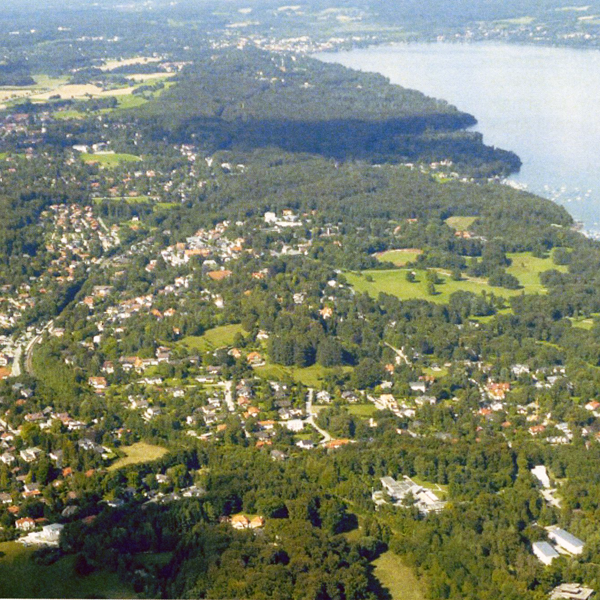
Category urban - landscape - architectural
Location Feldafing, Telecommunications School
Population 4,100 inhab.
Strategic site 10 km2, site of the Telecommunications School and links to the village centre and surroundings - Project site 31 ha
Site proposed by Municipality of Feldafing
Owner(s) of the site BImA (Institute for Federal Real Estate)
Commision after competition The competition results will be introduced as impulses into an extensive citizen participation process for further development
Team representative architect - urban planner - landscape architect
More Information
How can the site contribute to the adaptable city?
The village of Feldafing occupies an idyllic location next to Starnberg Lake. It boasts natural attractions that include Lenné Park, the lakeside and Rose Island in the east, and striking undulating landscape to the west. But the current urban structure of Feldafing has both design and functional deficiencies that need to be countered with targeted re-development and zoning concepts. An excellent example of this is the re-purposing of the vacant former station building into a town hall with a civic hall. The re-location of the signal corps training centre to the south, and the availability of land totalling 31 hectares provide a unique opportunity for new initiatives that will have a positive impact not only on the site itself, but also on the town centre and the surrounding area.
City strategy
In order to exploit the great potential of the area, the local council initiated the planning process in 2001 with a public participation campaign. In 2006/2007, a process of civic participation was undertaken to explore the issues of socio-economic development as well as urban planning and architectural design. The result was proposal for a campus-style complex with educational, scientific and research facilities with expanded functions that would preserve the park-like character of the plot despite additional construction. In addition, improvements to connecting routes were proposed to enliven and increase functionality in the town centre. In order to validate and if necessary update the results, the authorities conducted another residents’ survey in 2015, the results of which are intended to provide stimulus for the Europan competition.
Site definition
The training centre site is in an exposed position about 70 metres above Starnberg Lake. It is bordered on the west by the railway and on the east by the heavily trafficked Tutzinger Strasse, which separates the plot from Lenné Park and its golf course, a natural landscape that has evolved and been preserved for more than 90 years, and from the lake. The commuter rail station and the town centre are within walking distance. The low density construction gives the campus a park-like feel. The buildings were constructed over the course of seven decades and give hints to the history of the site. Some of them are worth preserving and convey the atmosphere of the site. In addition to the residential buildings, lecture halls, training and administration buildings the site includes sports, community and technical facilities.
Future of the site in relation to the site family and to Adaptability
The facility was originally built as an elite school for the National Socialists. Today the eight Sturmblockhäuser constructed in alpine style remind us of its inauspicious past. After the German Bundeswehr took over the site in 1960 the majority of buildings standing today were constructed in the style of classical modernism. Over the decades, additional buildings were put up in various styles. With the departure of the signal corps, there is now an opportunity to open up the isolated campus and integrate it into the urban, natural and functional context of Feldafing itself. To do that, connections will need to be developed to the lakeside, the town centre and the newly-redeveloped train station, and solutions will have to be found to ameliorate the obstacles presented by the railway and the Staatsstrasse. It is also important to re-establish a sight connection to the landscape, which has been lost through untamed vegetation growth. At an architectural level, planners must consider which buildings and structures are suitable not only to re-purposing for new uses, but should be retained to preserve the history and special atmosphere of the site, while at the same time looking towards the future and creating an space open for future generations. The goal is to create a balanced relationship between work, living, recreation and recuperation. A few examples that have been mentioned are innovative commercial ventures, health care and social facilities, and art and culture. The proposal should include an overall urban planning concept with suggested components, which identifies the potential for new construction and increased building density, and results in a unique, multi-use site for residents, the community and the region.
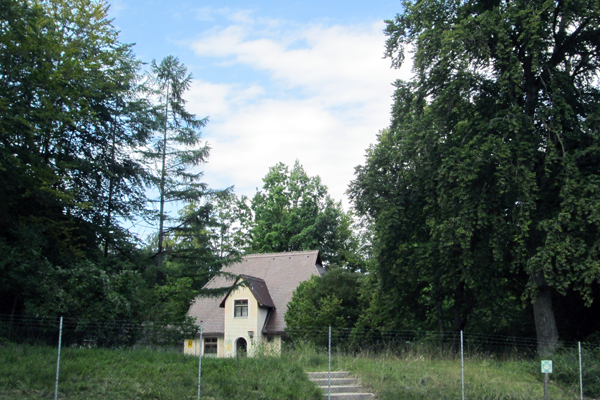
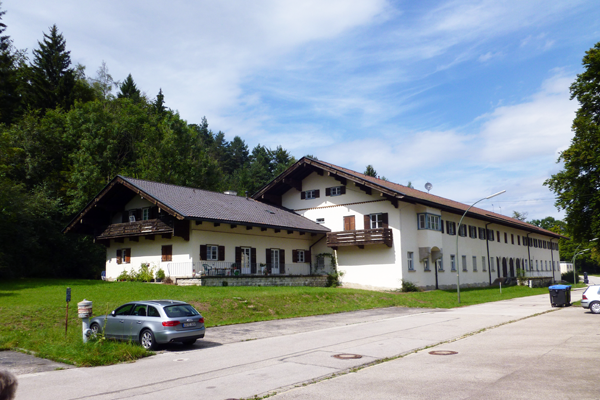
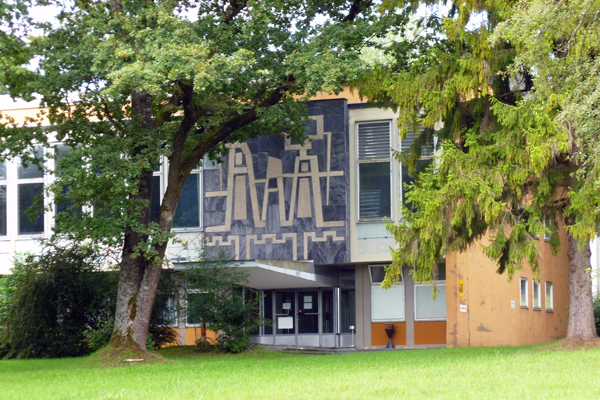
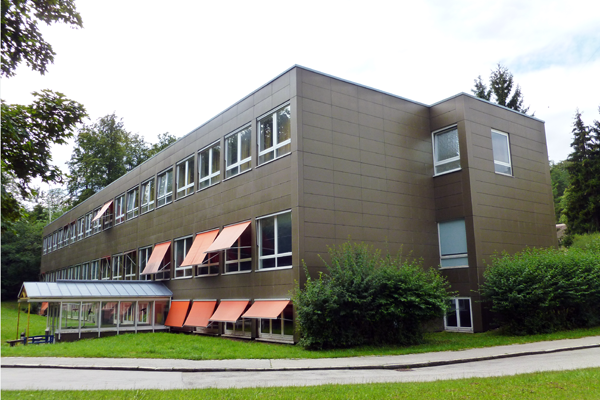
Questions on the site
is it possibe to have a text or video report of the site visit and colloquium?
A written report will be available after the site visit. There is no possibilty to publish a video report because the area is still under miltary use.
Do all of the 'Sturmblockhäuser' have two basement floors as indicated in the principle building analysis report, or only some of them?
Only one of the "Sturmblockhäuser" (building 44) has two basements.
The file "Feldafing-DE-C-Pr2" is only in German, is it possible to have a copy in english? Thanks
English version ist not available, all essentials from this document are summarised in the docuemnts FELDAFING-DE-C-Pr.pdf and FELDAFING-DE-C-Pr3.pdf.
Where can I download the report ?
The site visit report will soon be available on the site page, right column.
Are there any underground connections between the buildings?
No, there are no underground connections known.
Is it possible to both keep all existing buildings and demolish all?
The decision whether to keep or demolish the existing buildings in the area depends on the overall concept. In principle, the so called "Sturmblockhaeuser" are listed buildings and should be preserved. From our point of view, a good proposal would be an appropriate basis for a discussion with the monument protection service concerning the preservation or demolition. A demolition of all the listed "Sturmblockhaus" buildings is surely problematic, but should not be completely excluded.
This site is connected to the following theme
How to integrate vacant sites in urban development? Changes in economy, governance or society can give rise to overwhelming vacant spaces in the urban landscape: entire building complexes waiting for new users, former military zones, leftover green areas... These spaces cannot be taken up in normal/organic urban development as they are far too large and in need of full adaptation. Where should we therefore search for elements to fill the emptiness up and when can we consider it as a value? How can we give sense to vacancy and integrate it in new ways of making the city?
Questions on the site
You have to be connected –and therefore registered– to be able to ask a question.
Fr. 16 May 2025
Deadline for submitting questions
Fr. 30 May 2025
Deadline for answers
Before submitting a question, make sure it does not already appear in the FAQ.
Please ask questions on sites in the Sites section.
Please ask questions on rules in the Rules section.
If your question does not receive any answer in 10 days, check the FAQ to make sure the answer does not appear under another label or email the secretariat concerned by the question (national secretariat for the sites, European secretariat for the rules).